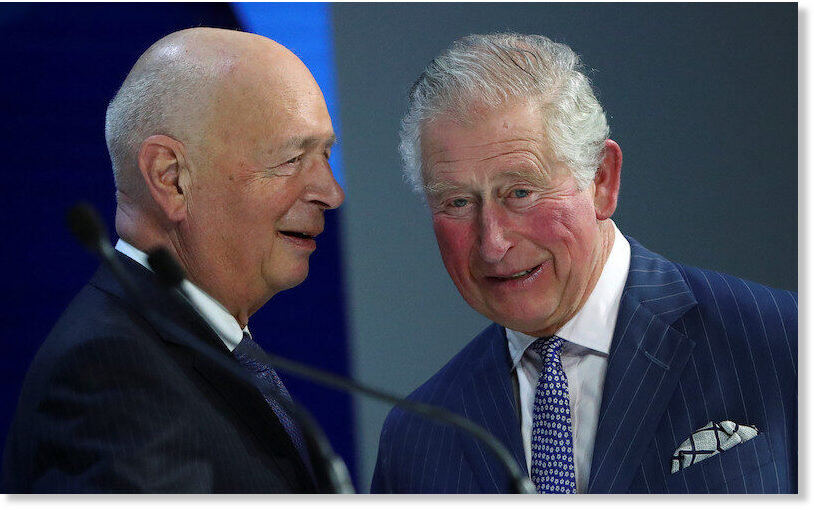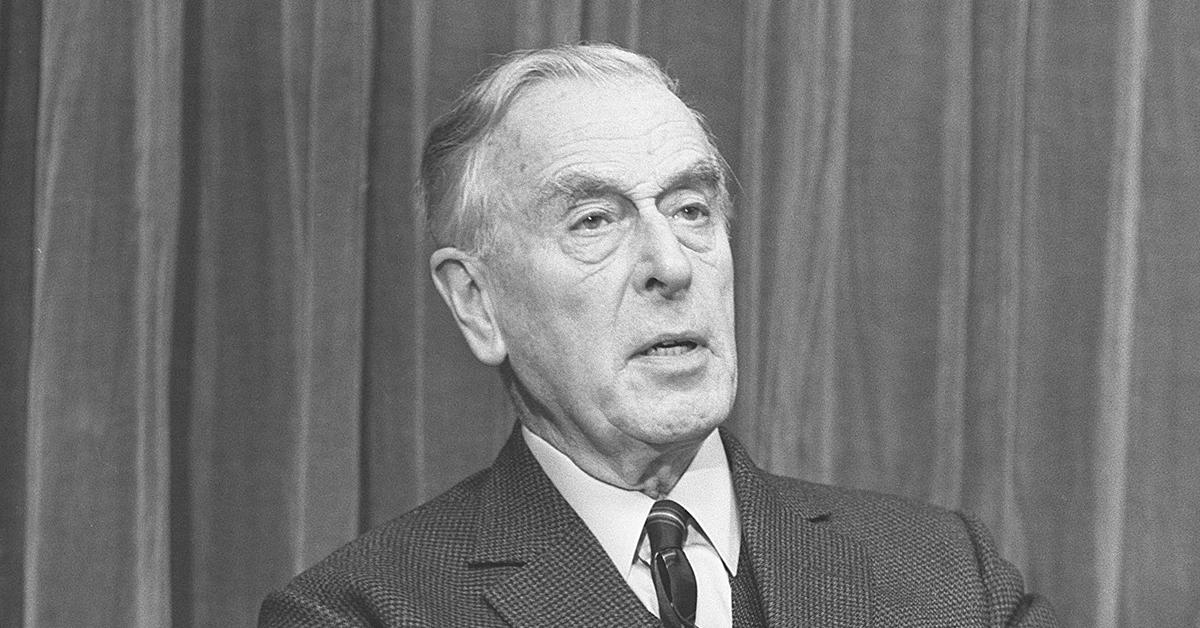'Twas an astonishing and brazen palace coup, made all the more so by its near-universal acceptance hundreds of years later as 'just one of those things'.
Your point is valid in general, but it's the exception that proves the rule. Henry was a tyrannical maniac in the course of subverting traditions, not upholding them. Besides, the above sequence of events are one unending line of 'parliamentary tyranny' with no checks and balances. From Rome to today, the 'senatorial class' keeps telling the people it rules, over and over again, that they should never, ever wish for a 'good king/queen - because tyranny'.
That's because they dread 'checks and balances' being imposed on their 'freedom to tyrannize'.
I agree with what you say. However, as someone who has a natural in-built Stuart bias (an Irish kinsman of mine who was at James II's side at the Battle of the Boyne went into exile with him at Paris St Germain and only returned to Ireland in his coffin), I felt conscious that I might be showing too much overt sympathy towards their cause. Thanks though for the tip on Seward's book.
As you point out, James II was ahead of his time in seeking religious tolerance in an age where such tolerance was rare. It would seem he felt that as King and Guardian of the Realm, he had a primary responsibility to the people before any allegiance to Parliament and the Church. Thus, in April 1687 he issued a Declaration for Liberty of Conscience, which conveyed the ideal of religious tolerance and freedom for all. By this endeavour, he sought to abolish the restrictive Tests Acts, which bound those in public office to be in communion with the Church of England. This was more than the Anglican Church's hierarchy could tolerate since it challenged their supremacy. They read it as showing he was in league with the Catholics. The repeal of the restrictive Tests Acts of 1673 and 1678, would not in fact occur until 1828-29 when Roman Catholics could again hold public office (but not that of Monarch or Lord High Chancellor). It took the hero of Waterloo, the Duke of Wellington, as Britain's Prime Minister to use his considerable strength of character and resolve to push the legislation through against great opposition. Lord Winchilsea, an opponent of the bill, claimed that by granting freedoms to Catholics, Wellington had “treacherously plotted the destruction of the Protestant constitution”. As a result, he and Winchilsea fought a duel in Battersea Park in March 1829. They deliberately missed each other in firing, and honour was satisfied. In some ways, Wellington was paying back a debt he felt that he owed to the brave Irish soldiers (particularly the Inniskilling Regiment) who had fought and died for for him at the Battle of Waterloo.
It is my understanding that King James also personally forgave his daughter Mary for her treason against him. James II certainly does get a bad press from British historians but, as you have noted, this is to cover the nefarious plotting against him by the 18th Century version of the British deep state, including the City of London (and Amsterdam) bankers. However, he was a genuinely brave man in battle, serving as a colonel of a volunteer regiment of foot in the English Civil War, and nobody did more to try and halt the Great Fire of London than he did.
One thing that intrigues me (and I have written about this on other threads) is the deep involvement the Stuarts, as Kings of the Scots, had in Freemasonry. They were ardent Freemasons and James I can be said to be one of the main instruments in introducing Freemasonry into England. James II would then take Scottish Rite Freemasonry with him to Europe when he went into exile. According to Laurence Gardner (ref. his book The Shadow of Solomon), James took the constitutions of Freemasonry with him into exile and they had to be reinvented in England as a result by James Anderson in 1723. I should add here that the St. Clair family also played a major role in establishing Freemasonry in Scotland but that is another story. James Anderson, a Presbyterian Minister and Freemason would write:
"Very little has come down to us that testifies the English masonic tradition before the late 17th Century. Many of the Fraternity's records of Charles II's and former reigns were lost in the next and the Glorious Revolution of 1688; and many of them were too hastily burnt in our time for fear of making discoveries."
As Gardner notes, history has been manipulated to suggest that James was displaced because he was a Catholic but, in truth, he was deposed to guarantee power to a Parliament that was controlled by Anglican supremacists (code here for the deep state) and not elected by a democratic vote of the people. Indeed, with the support of the Anglican Whig aristocracy, William of Orange would convene an illegal Parliament at Westminster on 26 December 1688 where the politicians of both Houses were held at gunpoint (with William's troops stationed both within the House and all around the Palace of Westminster showing no respect for liberty of conscience) to vote in respect of a dynastic change. The majority of politicians did vote in favour but even then it was a very close contest - the vote in the Commons was decided by merely one vote, hardly a convincing mandate for such an important constitutional change. After the Bill of Rights was passed in 1689, the monarch could now only govern with government consent as a parliamentary monarch. Hence, the purpose of the ceremony of accession we witnessed on Saturday in St. James Palace, London. Thus, one can legitimately argue with some justification, I think, that Britain's present constitution was established by an illegal Parliament convened by a usurper to the throne and the legislation passed there should be considered as invalid.
With James II's younger daughter, Queen Anne (Stuart), dying childless, this paved the way for the Hanoverian succession in the early 18th Century. However, the Stuarts would, as you point out, seek to seize back their throne in 1715 and 1745 with the Jacobite risings. You mentioned that this led to fighting in English towns between Hanoverian supporters and Stuart supporters. Interestingly, this fighting at sword point was often between masonic lodges, with some lodges supporting the Stuarts and others the Hanoverians and it also spilt to some extent on party lines between the Tories, many of whom supported the Stuarts, and the Whigs, who mainly supported the Hanoverians. The victory of the Hanoverians was by no means a foregone conclusion, since King George II had made serious plans to flee Britain to Hanover in case the Scottish forces reached London. George II's eventual victory over Prince Charles Edward Stuart (Bonnie Prince Charlie) owed much to his brother, the Duke of Cumberland, who rallied the English forces. In the Scottish Highlands, he is not known as Butcher Cumberland for nothing, given the vengeance he subsequently meted out to the defeated Highlanders.
This split in Freemasonic ranks may have carried over into North America, where Scottish Rite Freemasonry (owing more to Stuart influence) became the norm rather than English York Rite Freemasonry, which had prevailed in England after the Hanoverian victory in 1746. The American War of Independence was very much a Masonic led affair, with Freemasons such as Washington, Jefferson, Revere and Franklin leading the Revolution against the Hanoverian King George III. As I have argued elsewhere, Jefferson and Franklin would seem to have had definite Stuart sympathies - with Franklin joining the Hell Fire Club in 1757, which was alleged to have been an active Stuart front or cell. It has been suggested that the Founding Fathers of the fledgling United States even made overtures to a now elderly Charles Edward Stuart, who was living by then in Italy, to see if he wished to assume the throne of North America, which he declined because he was old and had no legitimate heirs (he did in fact have one illegitimate daughter, Charlotte, who he eventually legitimised, but she only survived him by two years and had no children) and feared a future Hanoverian monarch might seek to wrest the throne back.
Finally, such was the Hanoverian prejudice against the Stuarts that the ill feeling towards them still existed late into Queen Victoria's reign. Plans were made by the Jacobite White Rose Society (the white rose being a traditional emblem of James II) to stage a grand Stuart Exhibition in London in 1889 to mark the bicentenary of Stuart exile, which would display relics and documents of the Stuart period. When the exhibition took place, it was not sponsored by the White Rose Society as originally planned, since by a strategic manoeuvre of the Court, it was taken over by Queen Victoria herself. She arranged for the exclusion of Melville Henri Massue, the 9th Marquis de Ruvigny, Celtic language authority Henry Jenner, the writer Herbert Vivian and the Hon. Stuart Erskine who were all prominent members of the White Rose Society and had played a major role in organising the Exhibition. This was particularly hard on Jenner, who as Keeper of Manuscripts at the British Museum, had been responsible for the Exhibition's manuscript collection, much of which has never been seen again by their owners.
Plans had also been made by Anne, Duchess of Roxburghe (who was Mistress of the Queen's Robes) and others to organise a coinciding event in Scotland where Charles Benedict Stuart, the 4th Count of Albany and a potential Stuart claimant to the throne, was invited to attend from Italy. However, he was found dead soon afterwards in suspicious circumstances and it was common belief that he had been murdered. He was supposed to have fallen from his horse but it was argued that in no way was his demise consistent with the presumed fall. Indeed, a post-mortem examination revealed that he had died of suffocation.
Post the Exhibition, Ruvigny, Vivian and Erskine founded the Legitimist Jacobite League of Great Britain and Ireland. However, when they tried to lay a wreath at the Charing Cross statue of King Charles I in London they were again blocked by Queen Victoria who sent a considerable detachment of police to obstruct the ceremony.
You hinted that the current Charles III may not be the first Charles III, since that honour should really go to Bonnie Prince Charlie. In fact Gardner claims that after his victory at the Battle of Prestonpans on Sunday 22 September 1745, representatives of the Presbyterian, Catholic and Episcopal Churches united to witness his figurative crowning as King Charles III. The proceedings were conducted in the precincts of the (now ruined) Abbey of Holyrood House by the Reverend William Harper of Old Saint Paul's, Edinburgh. Unfortunately, since the Crown and Honours of Scotland were held by the Hanoverian Court, a substitute laurel wreath was placed on Charles's head instead. It should be noted, however, that the Pope and the Kings of Spain and France refused to recognise him as Charles III.
One thing the two Charles III would seem to share in common though is the fact that they are/were hard drinkers. Charles Stuart was known to be an alcoholic and this condition only worsened with age. Indeed, as his relationship with his wife Princess Louise of Stolberg-Gedern deteriorated after 1777, he was reported to be increasingly irrational and drunk. Charles would eventually die in Rome of a stroke on 30 January 1788, aged 67. The cardinals stated officially that he died on the morning of 31 January, as it was deemed unlucky to have him declared dead on the same date as his great-grandfather, King Charles I, who had met his end on the scaffold at Whitehall Palace.
The Monument to the Royal Stuarts in St. Peter's Basilica, Rome





